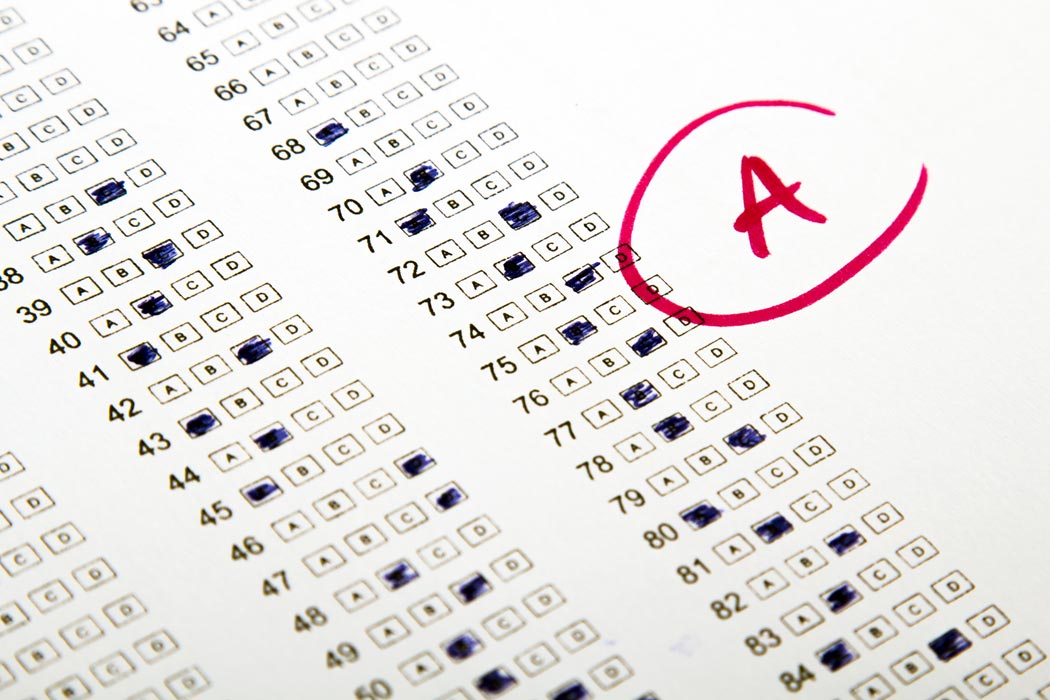(This is the final post in a four-part series about Common Core. PART ONE/PART TWO/PART THREE)
As Common Core standards and new standardized tests associated with them have rolled out in states across the country, educators, parents and officials have raised plenty of concerns: Are unified standards appropriate for a large and diverse country where states have traditionally set their own requirements for students and schools? Are teachers and students getting enough time to adjust to the standards before test results are used to assess their performance? Are the test questions appropriate for students who speak English as a second language?
Then, there’s another, more fundamental question: Are any standardized tests really useful?
Writing in The Phi Delta Kappan in 2007, Gerald W. Bracey describes doing a sort of back-of-the-envelope test of the standard assumption that high international test scores mean more economic growth. He compared countries’ rankings on the Third International Math and Science Study with World Economic Forum global competitiveness rankings. “The resulting number for about 35 countries was quite small and became negative if I removed the bottom five nations, which were quite low on both rankings,” he wrote.
Bracey goes on to describe a previous study of achievement in various countries led by Francisco Ramirez of Stanford University. Between 1970 and 1990, the research found, student test scores were positively correlated with development. But from 1980 to 2000 there was no such effect. Even for the period when scores were tied to higher development, the connection mainly came from countries moving from the bottom of the pack to the middle. Whether a nation’s students were average or strong test performers had little connection with economic success.
The study’s authors noted that test results fail to capture schools’ promotion of “initiative, creativity, entrepreneurship, and other strengths not sufficiently curricularized to warrant cross-national data collection and analysis.” Notably, test results weren’t correlated with the number of people who signed up for science and engineering in college.
A 2010 paper by Taiwanese researchers Shiu-Sheng Chen and Ming-Ching Luoh published in Social Indicators Research also considers the relationship between test scores and economic development. They did find a correlation between the two factors, but when they controlled for other variables, like a nation’s level of economic investment and secondary school enrolment, the link disappeared.
Of course, few people would argue that the sole purpose of education is making a country more productive, but the lack of connection between test scores and economic gains seems to severely weaken any argument for placing great emphasis on the tests.
Back in 1995, George Washington University education researcher Iris Rothberg laid out concerns about the increasing use of standardized tests to measure educational quality in the journal Science. “In recent years, our expectations about what we can learn from testing students have become increasingly unrealistic,” she wrote. “We use tests for inappropriate purposes and draw inaccurate conclusions from the results. To fix the perceived problem—low test scores—we administer more tests. In the process, we ignore real problems.”
Rothberg acknowledges that tests can be effective for some purposes, like measuring an individual student’s progress, diagnosing learning problems, and encouraging changes in curriculum. But she writes that comparing nations, states, or schools based on test scores often produces meaningless results. For example, in nations or states where fewer students take the tests, average scores tend to be higher. In a worst-case scenario, that can lead schools to game the system by excluding low-performing students from the test or even encouraging them to drop out.
Also, as discussed in the previous post in this series, there’s a strong association between poverty and low scores. “We tend to hold the education system responsible for test results reflecting broad societal problems,” Rothberg writes.
Discussing efforts to create new tests that measure more conceptual skills—the precursors of Common Core—Rothberg writes, “although the new tests may draw teachers’ attention toward writing and problem-solving skills and away from rote learning, this benefit could be obtained by incorporating performance tests or portfolio assessments into a school’s instructional program without attempting to make comparisons that provide spurious information.”
For another view of student achievement, Mei-Hue Wei and Corinne Eisenhart looked at Taiwan, one of the nations that consistently scores among the highest on international math tests, in a 2011 commentary for The Phi Delta Kappan. Students there score so well, they suggest, in part because of factors outside the classroom. Parents tend to be extremely invested in their children’s school performance, and most require them to take part in after-school tutoring. And yet, students with dazzling test results don’t necessarily go on to become superstar scientists or mathematicians.
“Although American children do not score as well as Taiwanese children on international math competitions, adult mathematicians and researchers in the United States excel beyond their Taiwanese counterparts in prestigious competitions, such as the Nobel Prize,” the authors write. “This paradox may be due to the differences in mathematical curriculum. Taiwanese mathematical curriculum emphasizes computational skills while math curriculum in the United States often focuses on higher-level thinking skills.”
As discussed in the first post in this series, promoting higher-level thinking skills is one of the major goals of Common Core. But it remains unclear whether that’s something that can be achieved through standardized testing.







